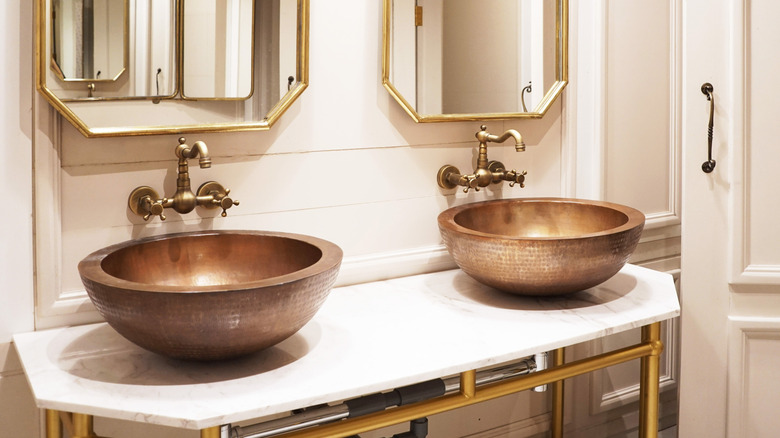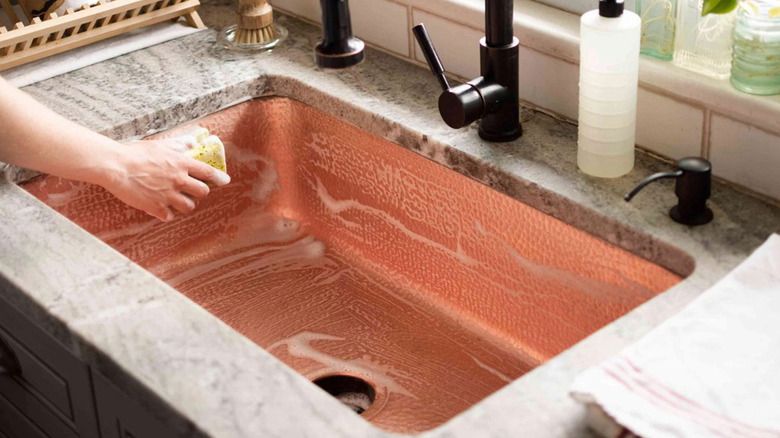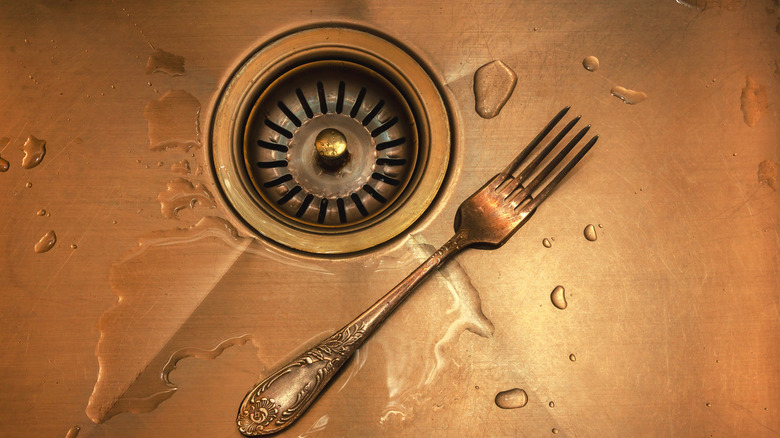The Very Best Way To Clean Your Copper Sink
Homeowners who want to make a bold statement in their kitchen or bath often opt for a copper sink. Its benefits extend beyond its looks, though. Copper is a more durable sink material than stainless steel or enamel, provides a naturally antimicrobial surface that prevents bacteria from growing, and helps increase the value of your home. However, despite these advantages, copper sinks have earned a reputation for being difficult to maintain, which isn't entirely fair. While a copper sink requires more frequent cleaning than other materials, you only need soap, water, a sponge, and a soft towel to keep it clean and looking fantastic.
One of the most intriguing things about a copper sink is that it can change color over time. The copper is not rusting, though. Instead, when exposed to water, air, and other natural elements, it develops a patina, often darkening to a beautiful rich brown. Proper cleaning and care can help you achieve the ideal patina for your sink, which is why knowing the best way to clean copper is so important.
How to clean a copper sink
Fortunately, cleaning a copper sink is incredibly simple and requires items you likely already have in your kitchen. Start by rinsing your sink with warm water to remove any food or other residue. Apply a mild dish soap to the surface, and wipe it across the sink with a nonabrasive, wet sponge. Be sure to scrub the sides and along the sink's inner rim, too. Next, rinse the sink thoroughly, and dry it with a soft, microfiber towel to prevent spots and discolorations.
You've probably wondered about how often you should clean your kitchen sink before, but it's important to understand that copper needs to be cleaned more frequently. It requires daily cleaning to prevent food and residue from damaging it. You should also get in the habit of rinsing it throughout the day if you've cleaned dishes with acidic or oily foods on them, as the acid can temporarily remove the copper's patina. Also avoid leaving dirty dishes piled up in the sink for extended periods.
How to protect and prevent damage to a copper sink
To keep your copper sink looking great, diligence is definitely key. However, it's just as important to avoid cleansers and tools that can damage the copper. Never use harsh or abrasive cleaning products, like bleach or ammonia, as well as abrasive cleaning brushes, sponges, or pads. Acidic cleansers are another big no-no for copper sinks.
If you want to preserve your sink's patina and finish, regular waxing is also a good idea. It's especially important if you live in an area with hard water and don't want to find unsightly mineral deposit stains in your sink. That's because the wax prevents water from puddling on the copper and creating mineral buildup. You can use wax specifically formulated for copper or beeswax every few months to maintain its finish. You can usually tell that it's time to wax a copper sink again when water doesn't bead up on it anymore.


